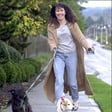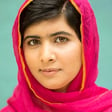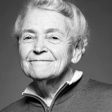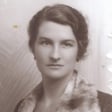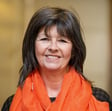Become a Creator today!Start creating today - Share your story with the world!
Start for free
00:00:00
00:00:01

SN14 - Vladimir Komarov
Transcript
Casual Banter and Story Introduction
00:00:19
Jeff Rogers
Sam. Jeffrey. Are you ready for me to fuck some words up? Let's do it. Okay, we're coming to you today with this story as we always do on Monday. Hello everybody. Happy sticking out. Let me clear my voice.
Who was Vladimir Komarov?
00:00:34
Jeff Rogers
Okay, this is the story about the man who fell from the sky. Vladimir, man, here we go. This is gonna be great. Russian, I love Russian. so You know, i I'm very fluent in Russian, okay? You are, you are. Sounds perfect when you say it. Vlad. Vladimir Mikhailovich Kamarov was the first man known to have died during a space mission. Space mission? We've sat here in these chairs for hours, so you guys are gonna go along with us on a journey, okay?
00:01:03
Jeff Rogers
He was described by his peers as a first-class pilot. He was warm-hearted, purposeful, and industrious, and held in high regard for his humility and his experience. Born on March 16th, 1927, he grew up with a hard-working father, mother, and a half-sister. After beginning school in 1935, he showed a natural aptitude for mathematics and an interest in aeronautics and aviation, you know, like me.
00:01:30
Jeff Rogers
He collected his magazines and built model aircrafts, as do I.
Komarov's Early Achievements
00:01:34
Jeff Rogers
And at the age of 15, Kamarov started a Soviet, he started at the Soviet Air Force School. After beginning his program, the school moved because of the German invasion of the Soviet Union.
00:01:46
Jeff Rogers
He graduated with honors in 1945, and over the next few years, he computed completed training at the Chekov Law of Higher Air Force School and then at the AK Service Military Aviation College. He completed training, graduated, and became a pilot in 1949. By December of 1949, he was serving as a fighter pilot for the 42nd North Caucasian, I don't think that's the right word, fighter division, and he was excelling.
00:02:18
Jeff Rogers
Okay, about a year later, he married Valentina Yakovlevna Kisilova. Good job. me And then was promoted to senior.
00:02:33
Jeff Rogers
for Just for the reference, we've been recording for about two and a half hours now, so we're a little on the edge. Look, we're donkeys on the edge.
00:02:46
Jeff Rogers
This shit's unedited, too. We're going to give it to him as we are, truly as we are. OK.
Entering the Cosmonaut Program
00:02:51
Jeff Rogers
By 1954, after serving a few years as chief pilot, he enrolled in an engineering program at the Zukovsky Air Force Engineering Academy. By 1959, he had achieved promotion to senior engineer lieutenant and became a test pilot at the Central Scientific Research Institute.
00:03:11
Jeff Rogers
Later that year, he was promoted to engineer captain and selected to participate in a cosmonaut candidate selection program. Out of the original 3,000 applicants, he was one of 20 selected for Air Force Group 1. At the age of 32, Kamarov did not fit the age, height, weight restrictions that had been specified by the chief designer of the space program, so he didn't make the top six.
00:03:36
Jeff Rogers
He was extremely well qualified because of his intelligence, flight experience, engineering influence on the designs for the Vostok and Vakshod in, and his flight test experience. You did good well. You didn' you did very well. You did good well. I'm still not done with my part yet. No, but that was good. Thanks. Those V words, you had them.
00:04:02
Jeff Rogers
was in her name really got me. In May 1960, he had a minor procedure done that left him unfit for physical training for approximately six months.
Medical Challenges and Preparations for Space
00:04:11
Jeff Rogers
Normally, due to the strict physical demands and requirements, this would have instantly disqualified him from continuing the program. However, because of his aforementioned qualifications, he was allowed to remain in the program. During his recovery, he continued with the required academic studies and returned to physical training earlier than expected.
00:04:29
Jeff Rogers
He was liked and respected by his peers, and his younger peers lovingly called him the Professor. Ooh, the Professor. Space flights began in 1961. By 1962, Komarov was the third highest paid cosmonaut, which is a Russian astronaut. Duh. At one point, another member of the program proved to be unacceptably susceptible to G-force in the centrifuge, and Komarov was chosen to replace him.
00:04:59
Jeff Rogers
However, during the routine EKG testing, Kamarov was pulled from the program for a heart irregularity, the same abnormality that grounded American astronaut, Deke Slayton.
00:05:10
Jeff Rogers
Kamarov persisted, and he persisted, and lobbied medical and military personnel for re-admittance, which was eventually granted. Throughout 1963, training continued in the groups, a rather unpro uneventful year, but Kamarov lived with his wife and two children at the training center. her For entertainment, the cosmonauts and families would hunt, cross-country ski, play ice hockey, shocking, and more.
00:05:32
Jeff Rogers
By 1964, he was declared space fly ready. In July, only seven cosmonauts, astronauts, remained eligible, and Komarov was named commander for the backup crew to Vakshad I. Eight days before its launch, Komarov was named prime crew member after many of his peers fought for him.
00:05:53
Jeff Rogers
For his first speechlop space launch, Kamarov was given various communist relics to take with him. While on the flight, with assistance from the other crew members, Kamarov performed tasks for medical and navigational tests. He observed the aurora borealis. Independently, Kamarov performed iron thruster tests, radio transmissions, including greeting at the Tokyo Olympics. That's pretty cool. That's really cool. And this was early too. That was 1963.
00:06:20
Jeff Rogers
three The mission was only 24 hours long. When he arrived back home, there were speeches and addresses to be made in the reference of his successful mission. He was promoted to colonel and received awards of Order of the Lenin and Hero of the Soviet Union. Throughout the rest of 1964, he was sought after by the strategic rocket forces and his successes, but stayed with the Soviet Air Force.
00:06:48
Jeff Rogers
In 1965, the team began planning and preparations for the first attempts at extravehicular activity in outer space. For the rest of 1965, he and his crew were taken to many important and historic sites in the Soviet Union and met with many important figures.
00:07:04
Jeff Rogers
In 1966, the team was working on designs for the Soyuz program. According to reports, the module hatch was too small to allow a safe exit of a fully suited cosmonaut. His concerns were shared by his teammates, and as assignments were repeatedly changed, the crew became increasingly anxious about the lack of response to their concerns.
What Happened During Soyuz 1 Mission?
00:07:24
Jeff Rogers
In 1967, Komarov was chosen to command the Soyuz 1 upon orter orbital insertion, things immediately started going wrong. The solar panels failed to deploy, which made the module unable to be fully powered. The navigation equipment was obscured and the high frequency communications were down.
00:07:43
Jeff Rogers
He managed to transmit some disjointed messages back to control. In the messages he stated, conditions are poor. I cannot orient the spacecraft to the sun. I tried orienting it manually, but the pressure has gone down. For five hours he attempted to orient the module. Because it had issues,
00:08:02
Jeff Rogers
With the SUES-1, the SUES-2, which was supposed to launch shortly after and be the groundbreaking starting point for the first extravehicular activity, was not launched. Komarov was ordered to attempt to orient the module using the iron flow sensors, but those failed too. Even with the complexities of manually orienting the module for manual re-entry, Komarov was able to successfully re-enter Earth's atmosphere. However,
00:08:29
Jeff Rogers
The module's rogue and main breaking parachute failed to deploy correctly. The module crashed into the ground, instantly killing him. His remains recremated and interred in the Kremlin wall in Acropolis in Red Square. The American astronauts requested that the Soviet government allow them to represent and attend the service, but they were denied.
00:08:50
Jeff Rogers
One of his cosmonaut colleagues said to a newspaper shortly after his death, For the forerunners, it's always more difficult. They tread the unknown paths, and these paths are not straight. They have sharp turns, surprises, dangers. But anyone who takes the pathway into orbit, they never want to leave it. And no matter what difficulties or obstacles there are, they are never strong enough to deflect such a man from his chosen path.
00:09:18
Jeff Rogers
While his heart beats in his chest, a cosmonaut will always continue to challenge the universe. Vladimir Kamarov was one of the first on this treacherous path.
Komarov's Legacy and Tributes
00:09:31
Jeff Rogers
Vladimir Kamarov has been honored tremendously after his death. His face has been on stamps ah for several countries,
00:09:40
Jeff Rogers
There is a bust of there's a bus on Cosmonaut's Alley in Moscow and a monument at the crash site. Before he left the moon, Neil Armstrong left a small package of memorial items that honored Kamarov, Gongarin, and the Apollo 1 astronauts, Gus Grissom, Ed White, and Roger Chaffee.
00:10:00
Jeff Rogers
Kamarov's name is found on a commemorative plaque at Hadley-Rile on the moon, left there by Apollo 15 commander David Scott in memory of 14 deceased NASA astronauts and USSR cosmonauts, and he has an asteroid on the moon crater named after him. That is so cool.
00:10:21
Jeff Rogers
Inspired by the cosmonaut, composer Brett Dean wrote a symphony that was commissioned by conductor Simon Rattle, entitled, Kamarov's Fall. Wow. Right? That's a cool man. That's a cool, I told you. yeah Researching him was just so, so fun. He he did so much and like,
00:10:42
Jeff Rogers
you know, he did so much. And this, ladies and gentlemen, we are falling from the sky right now. indeed fallen fallen we're falling from the sky and it's over with thank you for listening happy monday we'll see you next monday bye



